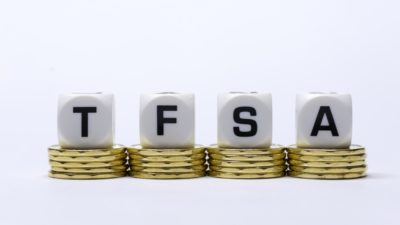Over the past six months, shares of IGM Financial Inc. (TSX:IGM) have traded sideways while continuing to pay a quarterly dividend of $0.56 per share. Patient investors have not been very well rewarded as shares have experienced a total price declined close to 25% over the past decade. Over the past five years, shares have performed no better than increasing in value by 5%.
IGM is a diversified financial services company which controls Investors Group and Mackenzie Investments. What was previously a fantastic business model during the peak in popularity of Canada’s mutual fund industry has turned into a problem waiting to happen.
The company’s stock, which currently trades at a price slightly above $41, offers investors a dividend yield of more than 5.5%. While this may seem like a fantastic deal at face value, it’ll look even more attractive if we keep going. The company is currently trading at a trailing price-to-earnings (P/E) multiple of no more than 12.5 times. Again, things may seem attractive to investors, but this could potentially be a situation when retail investors make the mistake of buying while investment professionals continue to avoid the name. Clearly, the professionals have done a lot more due diligence before choosing to invest or not.
To look behind the curtain, we have to consult the financial statements. Given that the company has a focus on mutual fund sales, the first metric to consider is top-line revenues, which has been almost flat for the past two fiscal years. Following revenues, we subtract the cost of goods sold and arrive at the gross margin, which, over the past four years, has shrunk from 65.9% to 62.9%. Although 3% may not seem like a substantial amount, the tightening of revenues and expenses is actually a major challenge faced by all competitors in the financial services industry.
The bottom line: earnings per share (EPS), have not increased substantially over the past four years. For fiscal 2013, EPS were $3.02, which declined to $2.98 the following year before rebounding to $3.11 in 2015 and $3.19 in fiscal 2016. The dividends paid over this same period have continued to increase. From $2.15 in fiscal 2013 to $2.25 in 2016, shareholders have not seen a high rate of growth in the income shared with them, yet the dividend-payout ratio has remained very high during this period. What was a payout ratio of 71% in 2013 has become 70.5% for 2016.
Although the dividends per share increased due to a consistent payout ratio, it is important to note that it was due to no more than a share buyback. As interest rates have remained low for quite some time, the company has increased long-term debt by more than $2 billion to shrink the share count. The result has been higher earnings per share and a dividend-payout ratio which went nowhere. Effectively, the company experienced no material increase in earnings but has been able to show an increase due to a shrinking share count.
Investors may need to be very careful with this name as financial engineering can only go so far. As interest rates rise, the company (and shareholders) may have no other choice but to face the music and cut the dividend. Only time will tell.







